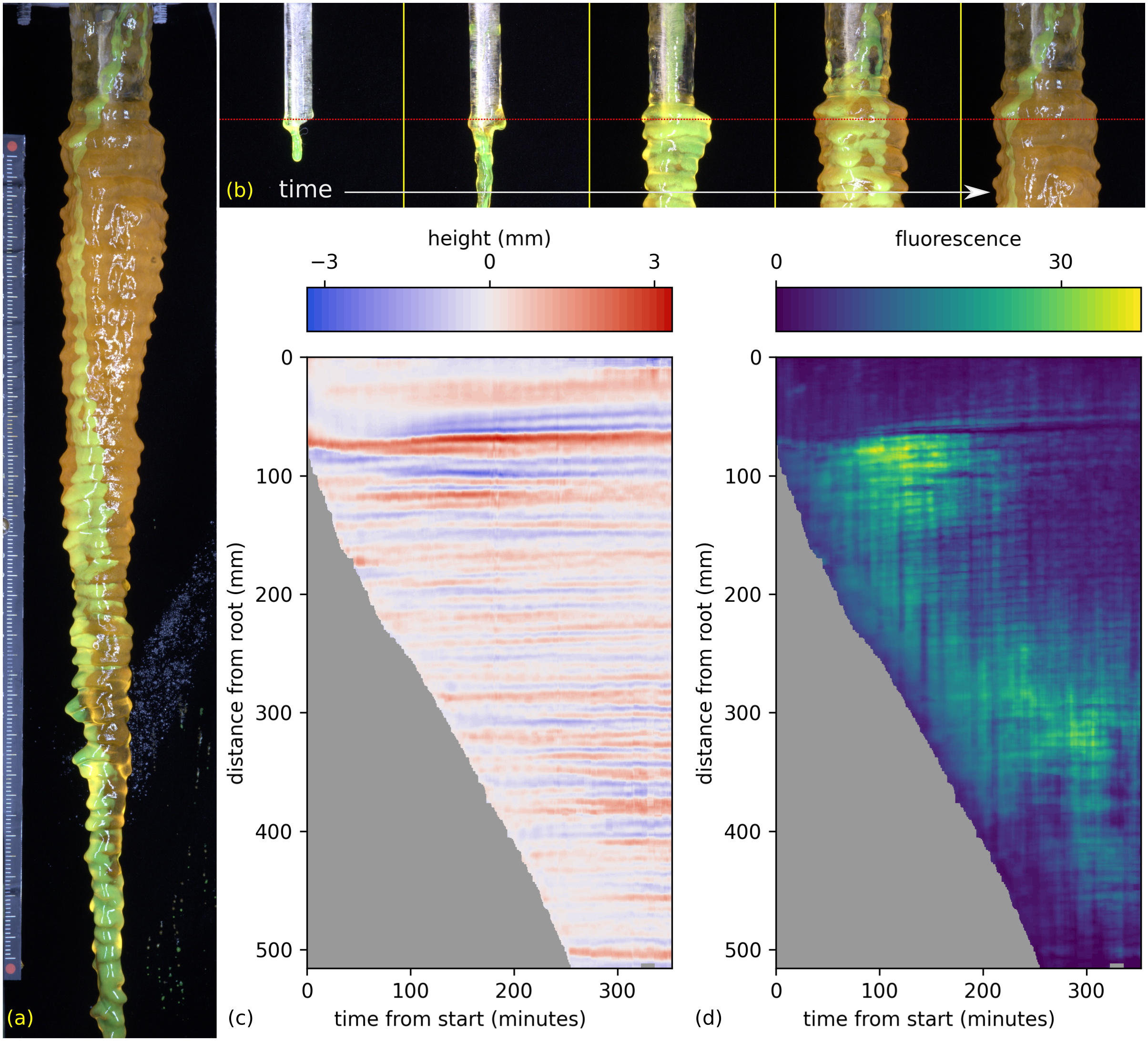Experiments on the formation of icicle ripples

My research focus for my Physics Ph.D. was on the mechanisms of wet ice growth using icicles as a case study. When icicles grow from water with a minute concentration of impurities, ripples will form on the surface, and before my research the causal mechanism was unknown. The physics of water and ice is surprisingly complex for something that is so ubiquitous, and produces many challenges in studying ice formation.
During this project I,
- created a machine to grow icicles in a controlled enviroment, and capture time-lapse photography of their growth;
- created and analyzed an analytical model of icicle ripple formation based on previous models that did not consider impurities;
- collected over 20 TB of data (mostly images) of over 120 lab-grown icicles with various concentrations and types of impurities;
- designed and automated a procedure to extract and measure the morphology of icicles from the images; and
- discovered how the concentration of impurities affects the distribution of water over the surface, using novel techiques.
Thesis Abstract
Icicles are a common sight during winter, hanging from rooftops and other structures from which water drips. The long slender shape of an icicle develops through a highly non-equilibrium process in which water flows down its surface, partially freezing along the way. This is an example of ``wet ice growth.''
Many icicles exhibit rippled pattern along their length with a near universal 9~mm wavelength. While measurements of icicle ripples date back to at least 1933, the mechanism through which they form has eluded physicists. The existence and amplitude of ripples was previously shown to depend on the presence of impurities in the source water, but no existing model for icicle ripples includes impurities. The problem of how icicles form in the presence of impurities is the focus of this thesis.
A pre-existing model for the rippling instability was extended to include physical effects of impurities. A linear stability analysis performed on this model showed that it did not predict ripples. The stability of the model is not sensitive to concentration, so such a model will likely never agree with experiment.
A set of 120 icicles were grown using various chemical species as the impurity. The changes in morphology from impurities were only affected by the molar concentration, showing that icicle ripples only depend on the number of dissolved molecules.
One of the impurities used was a dye that only fluoresces when dissolved in water. The liquid flowing down the surface of icicles was observed directly using this dye. Contrary to previous models, we find that the ice is incompletely and intermittently wetted by the liquid phase, and the concentration of impurities modifies the wetting properties of ice.
The location of impurities trapped inside of icicles was also observed. All of the impurities were found inside small spherical inclusions. The inclusions are organized into chevron patterns aligned with the peaks of ripples, with a layered substructure, suggestive of cyclic wetting and freezing.
These observations must inform any successful model of an impurity-driven rippling instability. Our results have general implications for the evolution of many gravity-driven wet ice growth processes.
